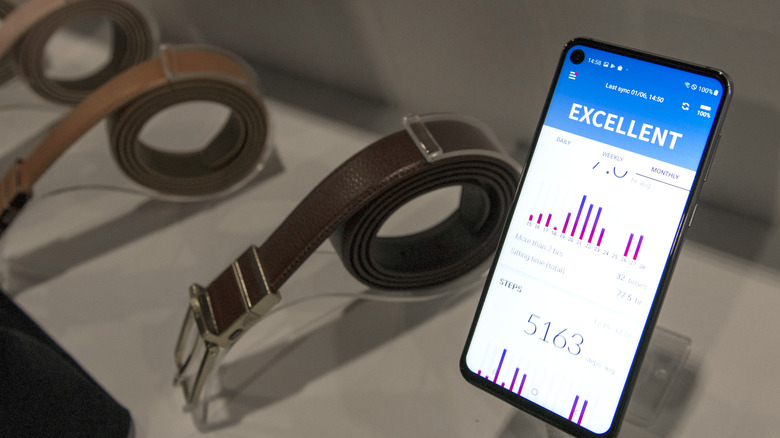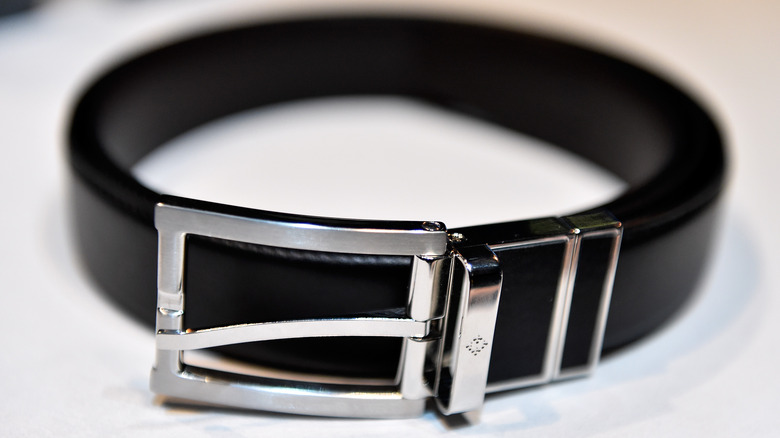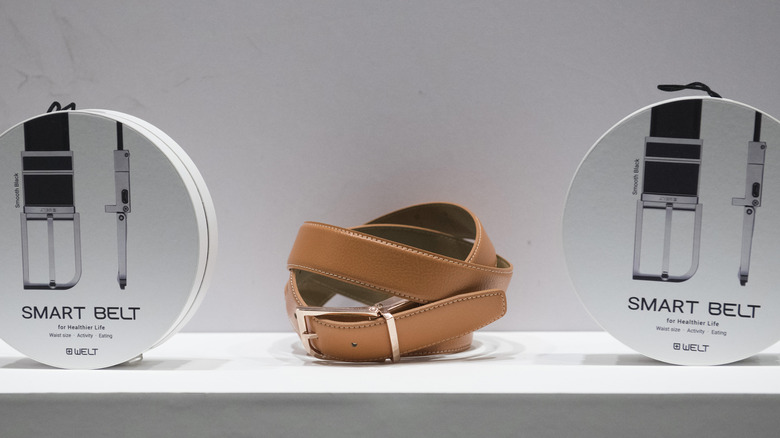The Bizarre Samsung Smart Belt That Monitored Your Waist Line
Samsung is known to many for its wide range of electronics, including smartphones, smart TVs, smart refrigerators, and... trendy accessories like smart fashion belts? That became the case when the tech giant showcased a peculiar product called the "Welt" during the Consumer Electronics Show in 2016. Its name stands for "wellness belt," and it was the product of just three Samsung employees working at its Creative Lab division, a sort of R&D program tasked with brainstorming concepts that the company might later turn into actual products (via The Verge).
At the time, Samsung's strange smart belt was merely presented as a proof-of-concept and didn't come with any pricing information since the company was unsure if the idea would warrant mass production. Fast forward four years later, and Welt Corporation — now a spin-off of Samsung — had introduced yet another variant called the Smart Belt Pro, which came with more features and even went on to win a CES 2020 Innovation Award (via Welt). For such an unassuming fashion accessory, some might be curious as to how an ordinary-looking leather belt is capable of having tech smarts without looking the part. Well, looks can be deceiving.
How does Samsung's smart belt work?
On the outside, the Welt is quite indistinguishable from a regular belt, except for the fact that its buckle has a micro-USB charging slot on its side. On the inside, that buckle is hiding various smart sensors integrated into its casing. This makes the smart belt capable of monitoring several personal health metrics, such as its wearer's overeating habits, number of steps taken during the day, and even how long they've been sitting. Welt can even help prevent stress-eating instead by analyzing changes in the belt's tension and then using this information to warn users if they've been eating too much.
Users can access their health statistics using Welt's companion smartphone app, which can also set personalized fitness goals automatically based on its wearer's lifestyle. As for the belt itself, Welt's Kickstarter page shows that each smart belt is handmade individually. It's constructed from leather with a zinc alloy buckle housing its magnetic waist sensors and a 90mAh battery that's said to last for over 20 days. Its price ranges from $99 to $179, with a limited edition that goes for a whopping $199.
Are smart belts actually a thing now?
With some indication that the wearables market may be growing beyond wristbands, it's no surprise how much technology companies are adding to simple accessories like belts these days. For example, Welt's Smart Belt Pro added motion sensors into the mix, giving it balanced-detecting and fall risk assessment features as seen in its YouTube demonstration video. However, Samsung's smart belt isn't the only player in this space. French startup Emiota showcased a similar albeit bulkier waist-monitoring smart belt known as Belty a year prior to Welt's unveiling (via Cnet).
Then there are smart belts like the Inie Belt, which not only comes with similar walking and sitting-time tracking features, but also includes a vibration function that alerts its wearer of incoming smartphone messages, or if their handset's been taken more than 10 feet away (via Inie Belt's Kickstarter). While the Inie Belt had potential, it never went on to the mass production phase as it was eventually canceled. That said, if smart belts are ever going to be a thing in the future, the market could definitely use a bit more competition, something that's still in short supply in this particular niche.


